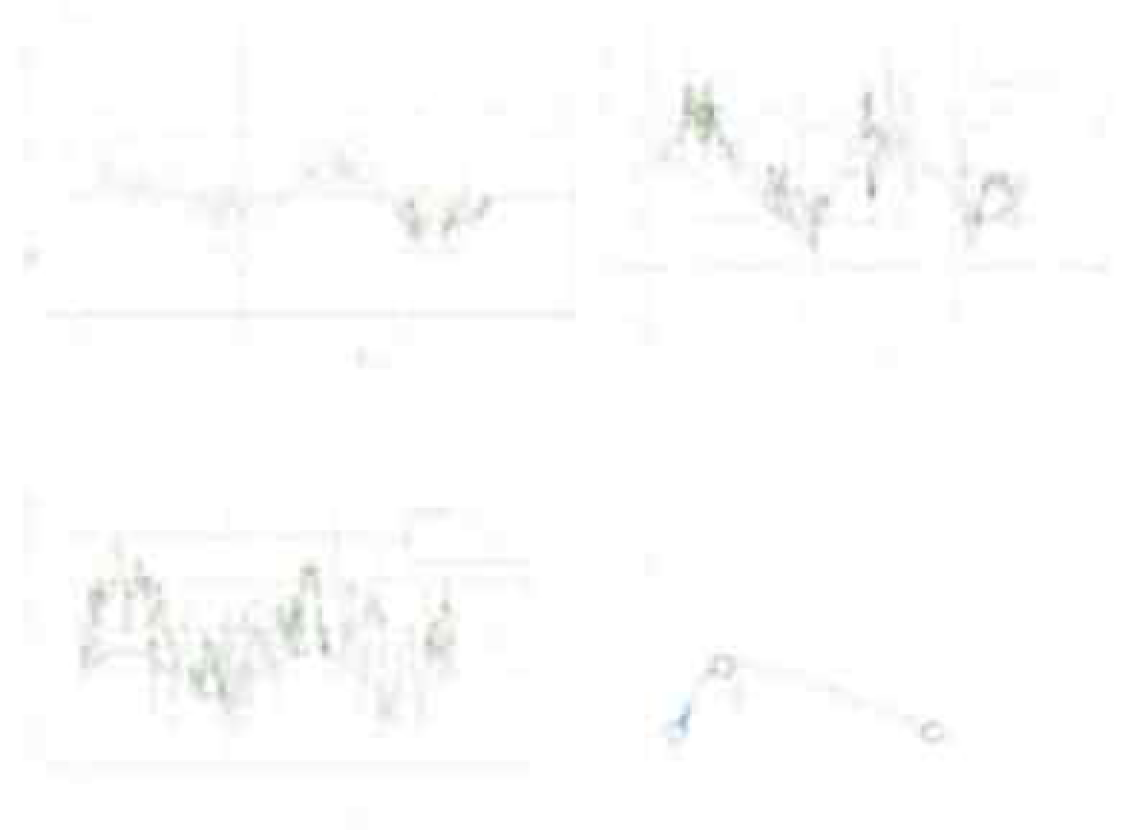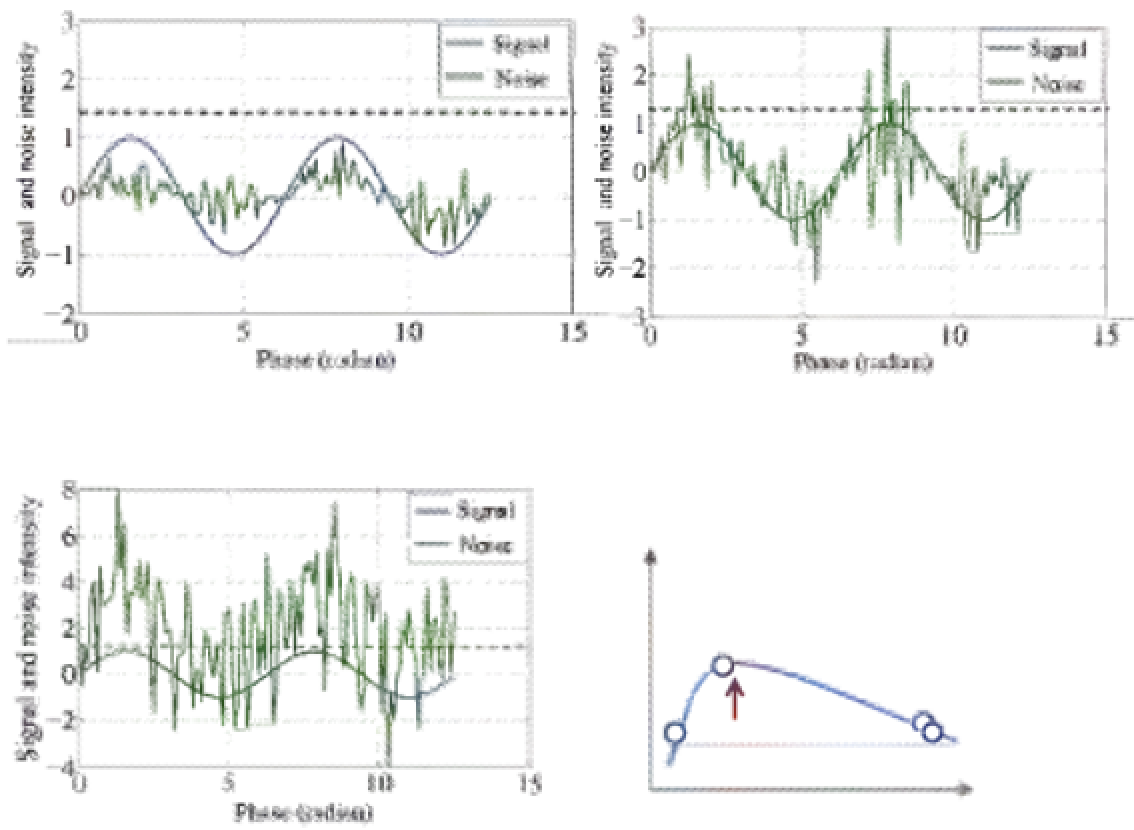Biomedical Engineering Reference
In-Depth Information
Output spike train
Output spike train
(b)
(a)
(a)
Output spike train
(b)
(c)
Noise strength
(c)
(d)
FIGURE 2.5
Mechanism underlying the stochastic resonance technique for detecting sinusoidal input signal with amplitude
lower than the spiking threshold of the neuron: (a) at low levels of random noise, (b) at optimal level of random noise, (c)
at large magnitudes of random noise, and (d) signal-to-noise ratio for the output spike trains corresponding to the condition
(a), (b), or (c).
of different noise statistics
[29, 31, 32]
. The exis-
tence of SR in neurobiology was first reported in
the mechanoreceptor hair cells of the crayfish
(
Procambarus clarkii
)
.
The cells were shown to
use stochastic resonance to enhance the detec-
tion of small vibrations (caused by planktons) in
aquatic environments. Stochastic resonance was
also observed in mechanosensory systems of
crickets, where it was used to recognize weak,
low-frequency acoustic signatures emitted by
the wing beats of a predator wasp
[33]
. Also, it
magnitude of the noise is significantly large, as
shown in
Figure 2.5
c, then the spike is generated
even without the presence of the stimuli. Thus,
the SNR of the system exhibits a resonance-
like phenomenon for which the peak is deter-
mined by the level of additive noise and by the
amplitude of the input stimuli.
Stochastic resonance has been extensively
studied in literature, and numerous mathemati-
cal models exist that capture the resonance phe-
nomenon under various stimuli in the presence















